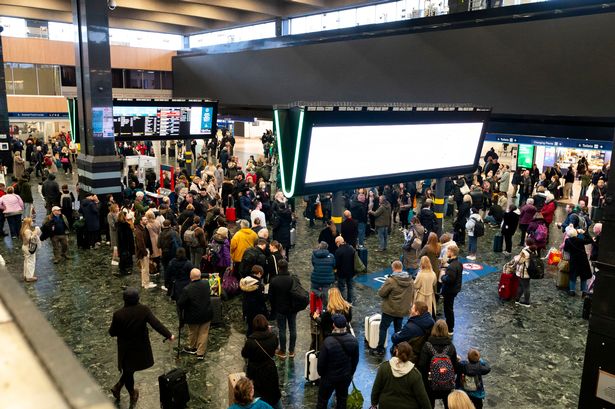The West Coast Main Line (WCML), a vital artery in the UK’s rail network, stretches from the bustling metropolis of London to the vibrant city of Glasgow, traversing a distance of approximately 400 miles. This crucial transport corridor not only links these two major population centers but also serves as a crucial conduit for numerous other important cities along its path, including Birmingham, Manchester, Liverpool, and Preston. As a backbone for both passenger and freight transport, the WCML plays an integral role in the nation’s economy and social fabric, facilitating the movement of people and goods, connecting communities, and fostering economic growth. Its historical significance intertwines with the evolution of railway technology and the industrial expansion of Britain, bearing witness to the transformative power of rail transportation in shaping the nation’s development.
The WCML’s historical narrative is a tapestry woven with threads of innovation, ambition, and challenges. The line’s origins lie in the amalgamation of several independent railway companies during the 19th century, a period of rapid railway development across Britain. The London and Birmingham Railway, formed in 1833, was a pivotal player in this early development, completing its route to Birmingham in 1838. Subsequently, further extensions and mergers led to the creation of the London and North Western Railway, a major force in expanding the line northward. The Grand Junction Railway, extending from Birmingham to Liverpool and Manchester, played a critical role in connecting these industrial centers. Over several decades, these lines, along with others like the Caledonian Railway north of Carlisle, were gradually integrated to form the precursor to the modern WCML. The nationalization of the railways in 1948 brought these disparate sections under unified control, creating British Railways and paving the way for further modernization and standardization.
The WCML’s evolution has been marked by continuous modernization efforts, reflecting advancements in railway technology and the growing demands of passenger and freight traffic. The advent of diesel and electric traction in the mid-20th century revolutionized train operations, replacing steam locomotives and significantly increasing speed and efficiency. The introduction of Advanced Passenger Train (APT) technology in the 1980s was an ambitious attempt to push the boundaries of high-speed rail travel, though technical challenges hampered its long-term success. The privatization of British Rail in the 1990s brought significant investment into the WCML, including a major upgrade program completed in the early 2000s. This upgrade focused on enhancing track infrastructure, signaling systems, and overhead electrification, leading to substantial improvements in speed, capacity, and reliability.
The modernization program of the early 21st century was a pivotal moment for the WCML, significantly improving journey times and service frequency. The upgrade allowed for the introduction of tilting Pendolino trains, capable of navigating curves at higher speeds, further reducing travel durations between key cities. The program also addressed bottlenecks and capacity constraints, allowing for increased train frequencies and improved passenger comfort. Despite its success, the upgrade was not without challenges, including cost overruns and disruptions during construction. However, the long-term benefits have been substantial, solidifying the WCML’s position as a crucial transport corridor and significantly enhancing the passenger experience.
The importance of the WCML to the UK economy cannot be overstated. It serves as a crucial link between major economic hubs, facilitating business travel, tourism, and the movement of goods. The line contributes significantly to regional economies along its route, supporting employment and economic activity. It serves as a catalyst for urban regeneration and development, creating opportunities for businesses and communities. The efficient and reliable movement of people and goods along the WCML is essential for national competitiveness and productivity, enabling businesses to access markets and consumers across the country. The line also plays a vital role in reducing road congestion and carbon emissions by providing a sustainable alternative to road transport.
Looking to the future, the WCML faces both opportunities and challenges. Continued investment in infrastructure maintenance and upgrades is crucial to ensuring the line’s long-term viability and capacity. The integration of new technologies, such as digital signaling and advanced train control systems, offers the potential for further improvements in speed, capacity, and reliability. Meeting the growing demand for passenger and freight transport will require careful planning and strategic investment. The development of High Speed 2 (HS2), a new high-speed rail line planned to connect London, Birmingham, Manchester, and Leeds, will also impact the role of the WCML. While HS2 is expected to relieve pressure on the WCML for long-distance services, it will be crucial to ensure effective integration between the two lines to maximize the benefits for passengers and the wider economy. The WCML will continue to serve as a crucial transport artery for the UK, its ongoing development reflecting the evolving needs of a dynamic and interconnected nation.














